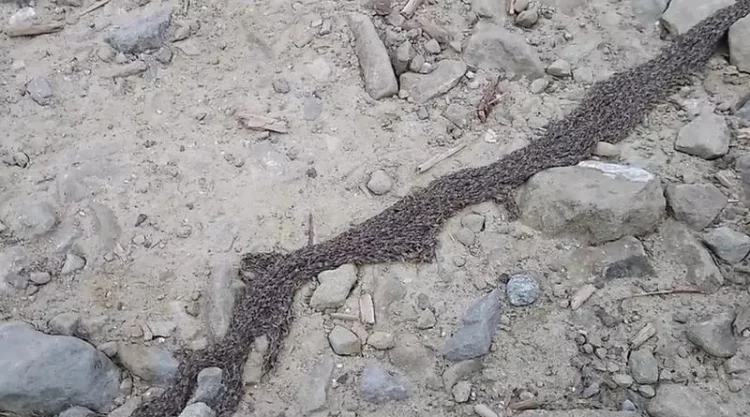Tourists hiking on a trail in the Tatra Mountains were recently taken by surprise when they encountered a rare and eerie phenomenon known as “pełzające korzenie” or “creeping roots.” This natural occurrence, which has been shrouded in mystery and superstition for centuries, was captured on video and has since sparked widespread fascination.
The phenomenon, scientifically referred to as “pleń,” involves the mass migration of larvae, creating the appearance of moving roots. These larvae, specifically those of the fly species Sciaridae, form long, writhing masses that can extend up to 10 meters. The latest sighting occurred on the trail from Iwaniacka Pass to the Ornak Mountain Hut following a storm. Adrian Stanicki, a nature enthusiast, shared a video of thousands of larvae moving in unison, igniting interest and curiosity among fellow hikers and nature lovers.
What Exactly is Pleń?
Pleń, also known as “robak hufcowy” in Polish, has intrigued scientists and nature enthusiasts alike. According to Marek Kusiak, a guide specializing in the Beskids region, pleń consists of thousands of larvae moving together, often after rain. These larvae measure between 50 cm to 100 cm in length but can form masses stretching several meters. Despite being documented since the 17th century, the exact cause of these larval migrations remains unknown. Theories range from food scarcity to the influence of sunlight on their movement patterns.

















